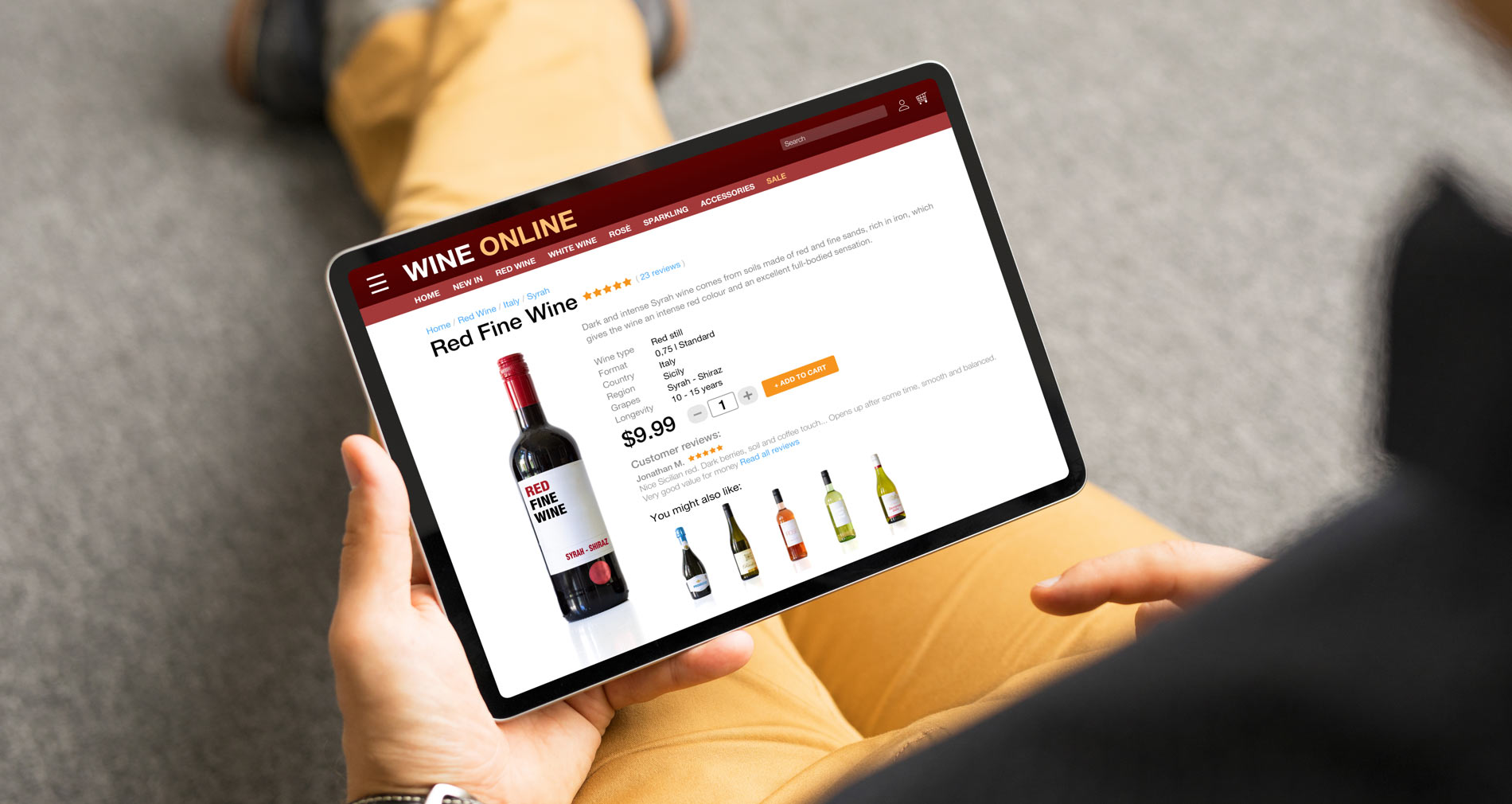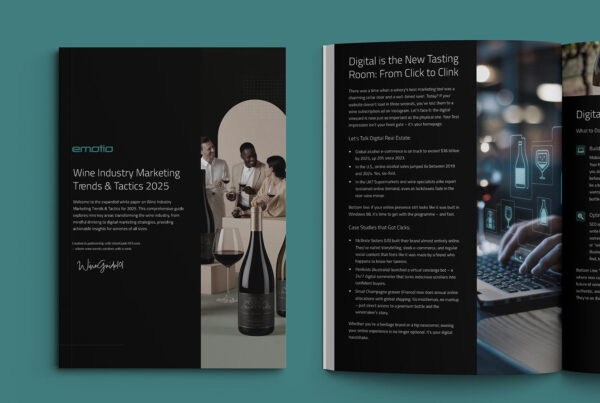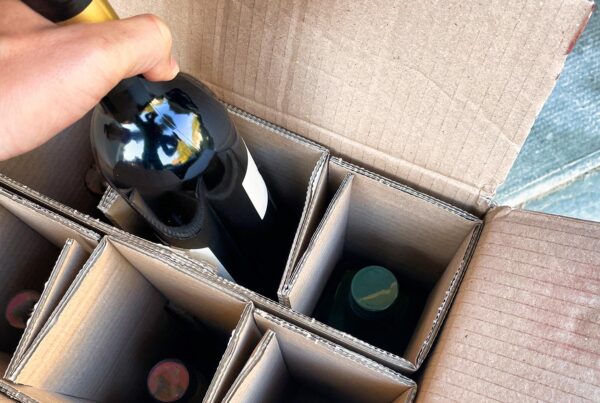The wine industry is experiencing a seismic shift towards digital sales, driven by evolving consumer behaviour and the accessibility of online shopping. The rise of direct-to-consumer (DTC) sales is both an opportunity and a challenge for wineries. While it allows brands to establish a direct relationship with their customers, it also requires a strategic approach to digital marketing, customer retention, and logistics. This guide dives deep into best practices for boosting online conversions, optimising sales funnels, and retaining loyal customers.
Understanding the Shift to E-Commerce and DTC Wine Sales
The global wine industry has historically relied on distributors, wholesalers, and retailers. However, modern consumers increasingly prefer to purchase wine directly from producers. According to industry reports, DTC sales now make up a significant portion of wineries’ revenue, particularly in premium segments. This shift offers numerous benefits, including greater control over pricing, brand messaging, and customer relationships.
Key Trends Driving DTC Growth:
- Increased Online Shopping: More consumers are comfortable purchasing wine online, especially following the COVID-19 pandemic.
- Consumer Desire for Unique Experiences: Customers want exclusive wines, personalised service, and the ability to engage with brands directly.
- Subscription and Membership Models: Wine clubs and curated subscription boxes continue to gain popularity as a way to drive recurring revenue.
- Regulatory Changes: Some regions are easing restrictions on direct shipping, making it easier for wineries to sell across borders.
How to Get More People to Click “Buy Now” Instead of “Exit”
1. Make Your Website Smoother Than a Well-Aged Bordeaux
- High-Quality Images & Videos: Customers can’t taste or smell your wine online, so compelling visuals are crucial. Use 360-degree imagery, tasting videos, and lifestyle shots to engage visitors.
- Optimise Website Performance: Slow-loading pages lead to high bounce rates. Compress images, use a content delivery network (CDN), and simplify site design to enhance speed.
- Compelling Copy: Tell the story behind each wine. Highlight tasting notes, pairing suggestions, and vineyard details to create an emotional connection with customers.
2. Build Trust Quickly with Transparency and Quality
- Trust Badges & Security Seals: Display SSL certificates, payment security badges, and positive customer testimonials prominently.
- Authentic Customer Reviews: Feature reviews and ratings to reassure potential buyers. Encourage user-generated content on social media to showcase real customer experiences.
- Sustainability & Ethical Practices: Consumers increasingly prefer brands that prioritise sustainability. Share your eco-friendly farming methods and packaging innovations.
3. Pricing Strategies That Encourage Purchase
- Psychological Pricing: Small pricing tweaks (£19.99 vs. £20) can impact buying decisions.
- Incentives for First-Time Buyers: Offer discounts, free shipping, or a bonus bottle to encourage initial purchases.
- Tiered Pricing Models: Provide incentives for larger orders, such as discounts on bulk purchases or free shipping over a certain threshold.
4. Checkout Optimisation: Remove Friction to Increase Conversions
- Simplify the Checkout Process: Reduce form fields, enable guest checkout, and integrate auto-fill features.
- Abandoned Cart Recovery: Use automated email sequences and SMS reminders to bring customers back to complete their purchases.
- Offer Multiple Payment Options: Include Apple Pay, Google Pay, PayPal, and buy-now-pay-later options to reduce drop-offs.
Challenges and Opportunities in DTC Wine Sales
Challenges
- Legal and Compliance Issues: Alcohol sales are heavily regulated. Wineries must navigate age verification laws, shipping restrictions, and licensing requirements.
- Logistics and Shipping Costs: Wine is fragile and expensive to ship. Implement cost-effective, sustainable packaging solutions to enhance the delivery experience.
- Competition from Established Retailers: Larger retailers can offer bulk pricing and free shipping. Wineries must differentiate through branding, storytelling, and customer engagement.
Opportunities
- Enhanced Customer Relationships: DTC sales allow wineries to build direct customer connections, fostering brand loyalty and repeat purchases.
- Expanded Market Reach: Online sales enable wineries to reach a global audience beyond their local tasting rooms.
- Data-Driven Insights: DTC platforms provide valuable customer data that can be used to personalise marketing and improve offerings.
Optimising Your Digital Sales Funnel
A well-structured digital sales funnel ensures customers move seamlessly from discovery to purchase. Each stage should be optimised to maximise conversion rates.
Understanding the Customer Journey
- Awareness: Use content marketing, social media, and SEO to attract new customers.
- Interest: Offer engaging product pages, detailed tasting notes, and behind-the-scenes content to capture attention.
- Desire: Provide limited-time offers, customer reviews, and membership perks to encourage purchase.
- Action: Ensure a seamless checkout process with minimal friction.
Retention and Long-Term Customer Value
- Loyalty Programs: Reward customers with points, discounts, and exclusive offers.
- Subscription Models: Offer wine clubs and monthly subscriptions to ensure consistent revenue.
- Engagement Strategies: Use personalised email marketing, social media interaction, and event invitations to maintain customer interest.
Public Relations and Brand Building
- Leverage Influencer Partnerships: Collaborate with wine bloggers and social media influencers to increase brand visibility.
- Storytelling Through Content: Share your winery’s history, sustainability efforts, and production process to build a compelling brand narrative.
- Participate in Industry Events: Engage in virtual tastings, webinars, and wine expos to connect with a broader audience.
The Bottom Line
Wineries that embrace e-commerce and DTC sales are positioned for long-term success. By optimising digital strategies, leveraging data insights, and fostering customer relationships, brands can thrive in this evolving landscape. The key to success lies in understanding consumer behaviour, streamlining the purchase journey, and continuously adapting to market trends. Whether through a personalised shopping experience, innovative packaging, or immersive brand storytelling, wineries that invest in digital excellence will stay ahead in the competitive wine industry.
Cheers to the future of wine sales—one online purchase at a time!
Download our detailed white paper here.
Any thoughts on which part of your digital strategy needs a bit more decanting? I’m here to chat over a virtual glass if you fancy a deeper dive!
Need a Helping Hand?
Unless digital marketing is your full-time gig and you’ve got an all-star in-house team working round the clock, let’s be honest—it can get a bit overwhelming. That’s where we come in. At Emotio Design Group, we seamlessly integrate with your existing team, working hand-in-hand with marketing directors and managers to drive your digital strategy forward. For decades, we’ve been perfecting the art of online storytelling, conversion optimisation, and brand building—turning casual browsers into loyal customers, all while keeping things as engaging and approachable as a friendly chat over a fine wine.
We understand that your passion lies in crafting exceptional wines, not wrestling with website tweaks or digital sales funnels. So why not leave that to us? Consider us an extension of your team, dedicated to elevating your online presence and ensuring every digital interaction is as satisfying as a well-poured glass. Cheers to making digital marketing as effortless and enjoyable as your next sip of vintage perfection. If you’re ready to take the pressure off and see your DTC sales flourish, we’re here to help every step of the way. Cheers!





